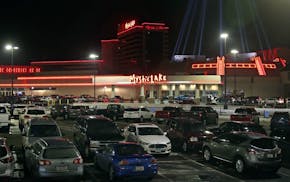Inver Grove Heights is the latest south-metro suburb to tackle the issue of outdoor wood burners and boilers and the smoke they emit, after a resident complained to the City Council.
It's a refrain that has risen in communities throughout the area since the cost of natural gas began climbing high a decade ago and people began a quest for alternative heating sources.
Especially popular in rural areas, the units are housed in tiny shacks with a smokestack. They can stand anywhere from 30 feet to as far away as 500 feet from a home or a building. Inside the shacks, a water jacket surrounds the firebox and heat exchanger. Heated water is circulated to a house or building, and in one case, to an Inver Grove Heights swimming pool.
But the use of the boilers and burners in the suburbs is not always popular with the neighbors, some of whom get smoking mad.
"They can create nuisances when they are in more of an urban setting," said Terri Dill, a senior planner with the city of Savage. "The smoke and soot can actually go into your neighbor's house."
Dill said Savage started considering an outdoor wood boiler policy in late 2008 because residents started calling to ask whether the devices were permitted. After a study of the pollution produced by many outdoor wood boilers, the Savage City Council decided last May to ban them in all areas of the city. One existing unit was grandfathered in.
Burnsville passed an ordinance in 2009 that prohibits the appliances. Stillwater did the same in March.
Now, the Inver Grove Heights council has directed staff members to delve into the issue and report back later this month with the findings, said City Administrator Joe Lynch.
He and other staff members are looking into potential health effects and regulations in other communities in the metro. They will also consider what, if anything, should be done about the four or so already up and running, Lynch said.
The staff members have looked at 15 other metro cities, from Forest Lake to Rosemount. They found that some have bans. Others regulate them with performance standards, and go after outdoor wood burners and boilers as a nuisance over the emissions.
According to the U.S. Environmental Protection Agency, there's reason for concern in urban areas: Outdoor wood boilers and burners emit up to 1,000 times more than traditional indoor gas and oil furnaces.
The boilers spew more smoke and pollutants because the wood inside burns slowly, smoldering over a long period of time with little oxygen supply. On summer days, or on calm winter days, the smoke, soot and accompanying toxins can hang low and enter a neighbor's house through air intakes, windows, doors and cracks.
"This isn't like having a fire in your back yard," said Jim Skelly, Burnsville city spokesman. "This is like a 24-7 smoke generation device."
John Seltz, supervisor of the air policy unit at the Minnesota Pollution Control Agency, said he has heard an increasing number of complaints about outdoor wood boilers over the last few years. His agency fields about 70 or so complaints a year involving wood-burning, and at least half involve outdoor boilers, he said.
"They seem to cause issues," Seltz said. "There are cities that have experience with them and have lost their patience with them."
Joy Powell • 952-882-9017 Katie Humphrey • 952-882-9056

Ellison sues real estate broker over alleged loan schemes
Developer vows to push forward on Lino Lakes mosque project even if city tries to stop it

Doors Open Minneapolis gives free tours of more than 100 buildings

